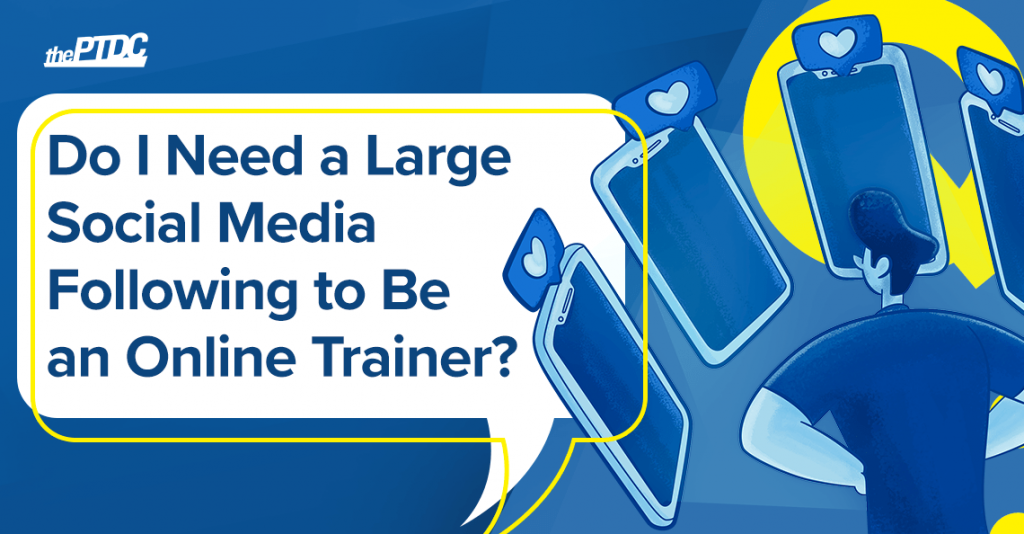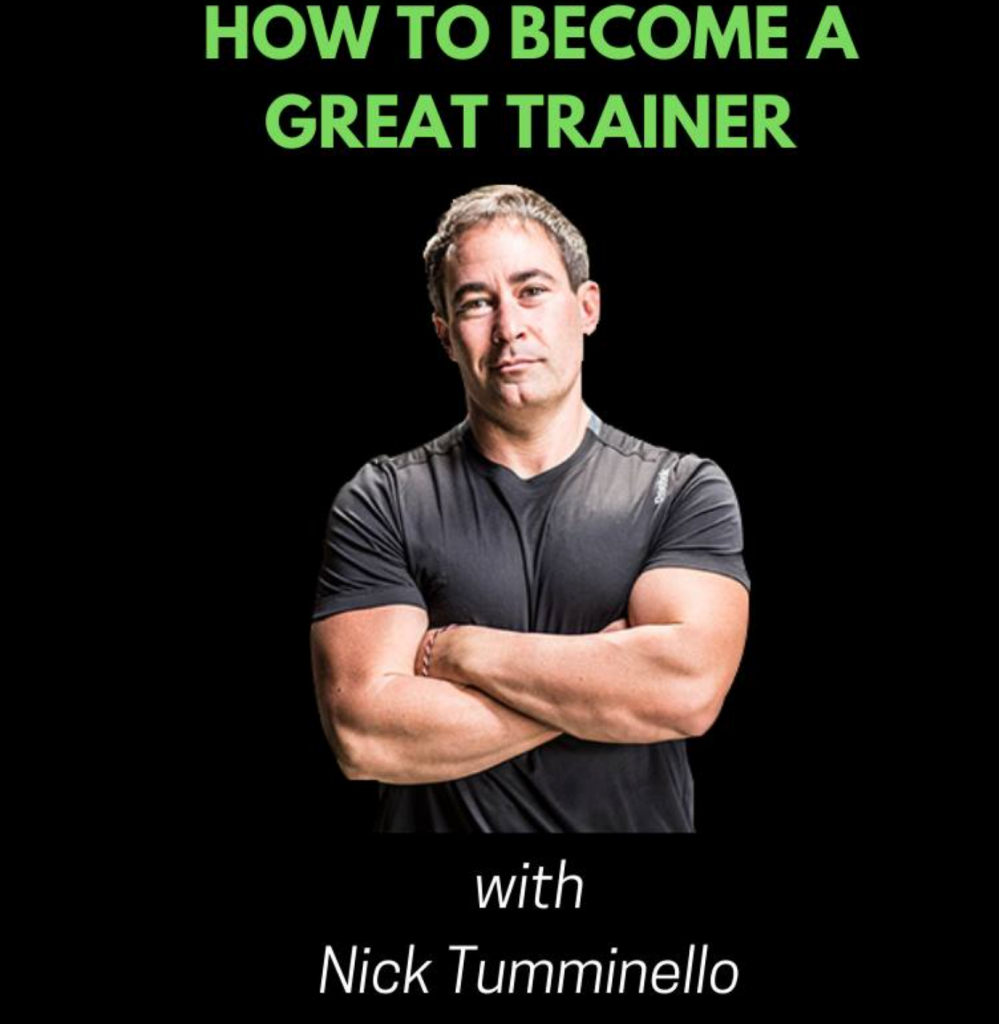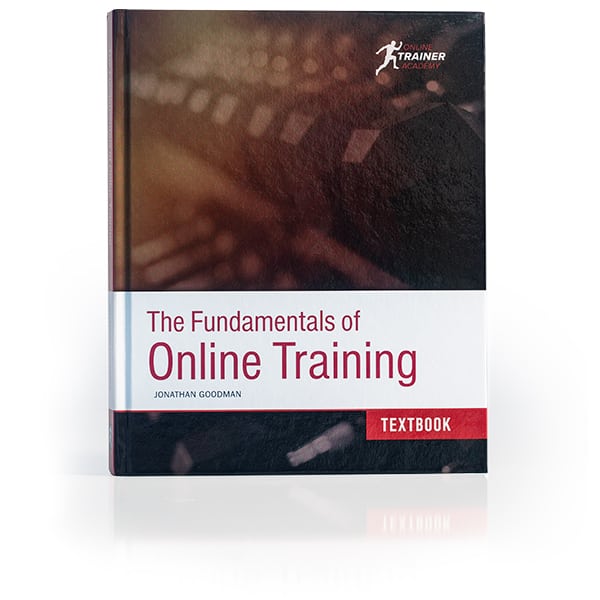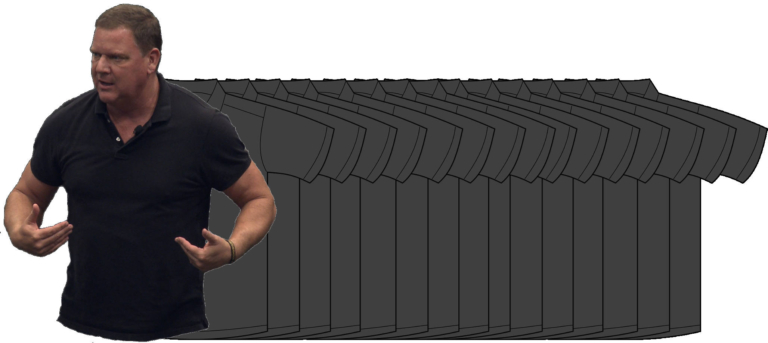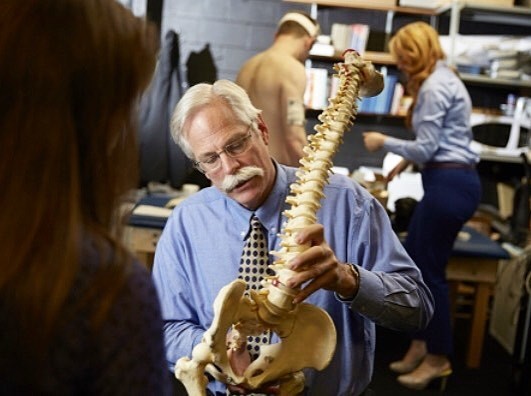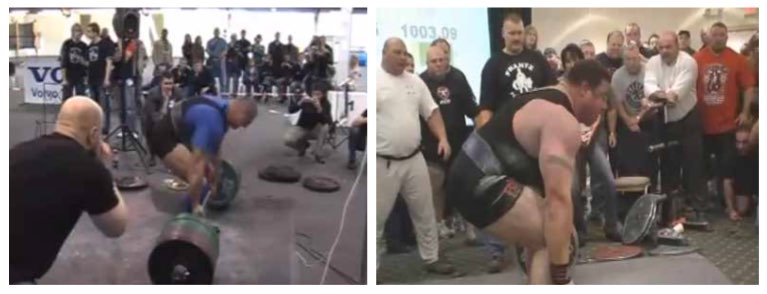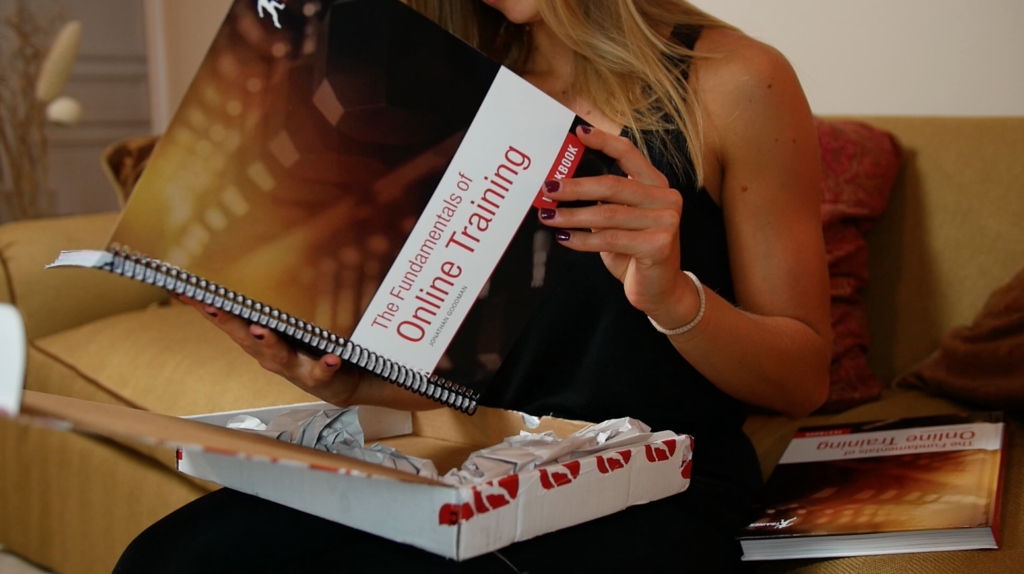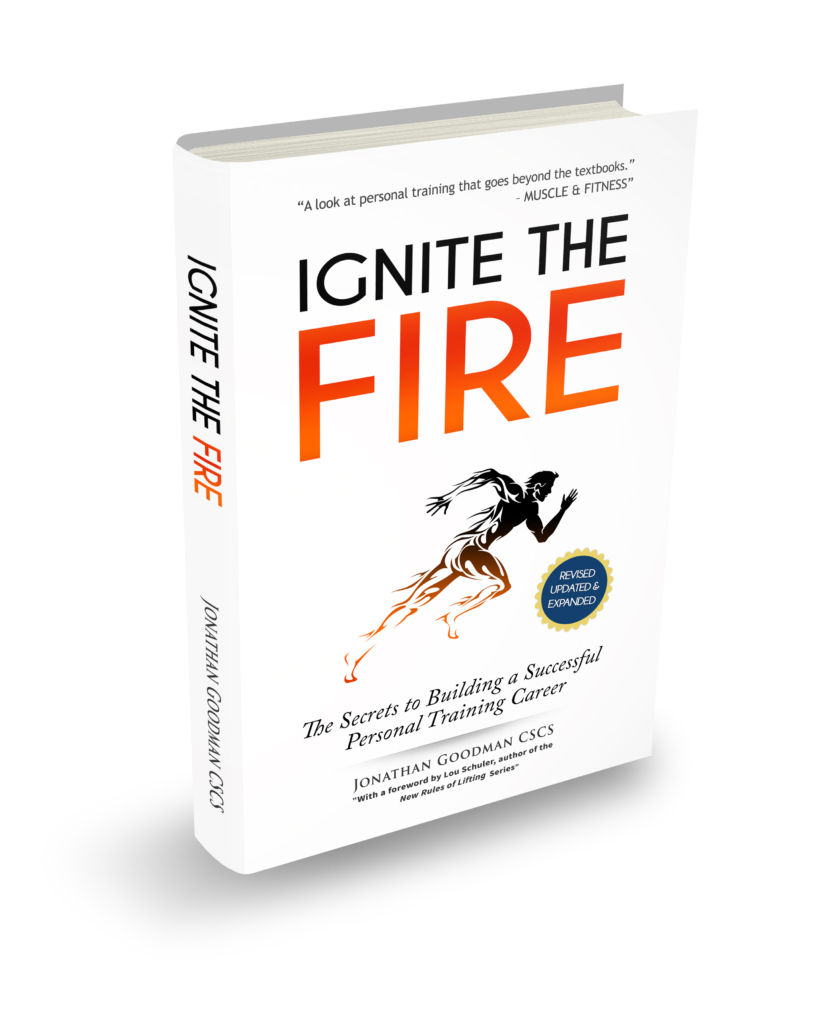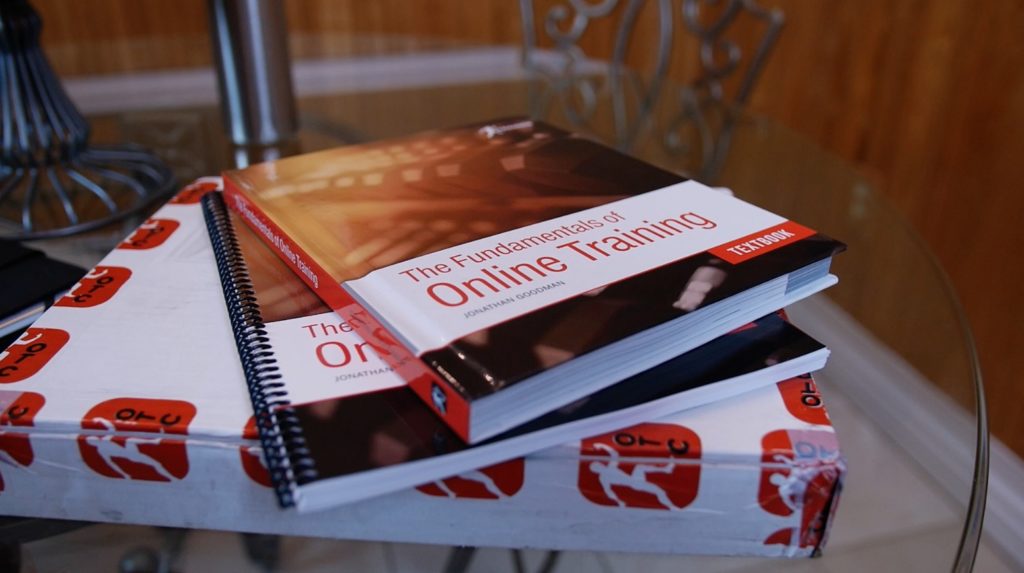Last week I received an email from Jon Goodman. At first I thought he was going to extend an invite to me to come up to Toronto for a weekend of watching Jean Claude van Damme movies.
But that wasn’t the case.
Fingers crossed for next time.
Nope, instead Jon was curious if I’d be interested in him writing an article for my site highlighting his new & nifty (and FREE) program writing software for coaches.
Uh, hell yes!
Jon is notorious (in a good way) at giving away stuff that he could easily charge good money for. Not only that, there aren’t many people who have had as much positive influence on the industry as Jon…he continuously brings the tide up for everyone.
Check it out.

The Ultimate 5-Step Guide to Progressing a Client Workout
Note From TG: Before I defer to Jon, let’s begin with this: It’s NOT by spotting someone like what’s pictured above. OMG this is one of my biggest gym pet peeves. Well that, and people who refuse to share equipment.1 I don’t know who the person is that gives the okay or thumbs up on all these registered images showcasing a trainer spotting their client this way, but they need to be fired. There’s got to be room in the National Defense Budget to fix this travesty, no?
Workout programs often last a month.
Then, a coach ‘changes it up’ for no reason other than it’s been four weeks.
This is wrong.
My programs don’t start and stop: They evolve.
Every four weeks I’ll review, assess, and adjust the program.
The goal’s to balance fun and progressive overload.
This article shares how I think about progressing workouts.

This is a picture of me in workout attire. I felt like one belonged here but have basically zero pictures of me training. So, here’s one of the few I have. It’s old. K, moving on.
Four-Week Program Assessments Are Based on 5 Questions:
- Exercise flow: Did anything not work?
- Stalling: Is anything important not progressing?
- Limitations: Is anything outside of our control affecting programming?
- Boredom: Is the client bored or do they hate anything?
- Moving forward: How should I progress the program for next month?
Next, I’ll show ya how I use these questions to evolve my own program.
My goal’s hypertrophy.
The program I’m doing three different workouts repeated twice a week for four weeks (24 total workouts).
The split:
- Legs / shoulders
- Chest / back
- Arms / core
Let’s dig in:
To start, I’ll pull up my list of completed workouts using my free software for personal trainers, QuickCoach.Fit.

1. Exercise flow: Did anything not work?
BB Romanian Deadlifts (RDL’s) are performed on day 1. This thrashes my hamstrings.
Then, on day 2, I perform BB bent-over rows.
While I didn’t get hurt, the idea of loading heavy BB bent-over rows with sore hamstrings isn’t ideal.
The goal’s back training, not core stability.
With that in mind, I’ll switch the BB bent-over rows for a bench-supported DB row moving forward.
My previous plan (with bent over bb rows)

Notice that the sets, reps, and all other variables (I use RPE) stay the same. When evolving a program, things like exercise selection / grip often change but stuff like sets, reps, order, tempo, etc. don’t.
Beyond that, the flow was good.
Moving on . . .
2. Stalling: Is anything important not progressing?
For each program, there’s 2-3 exercises I monitor progress on.
They’re usually representative large multi-joint movements.
I’m currently basing progression on two exercises:
- Incline BB Bench Press
- BB Romanian Deadlift
To check up on progress, I’ll pop open the Past Performance tab in QuickCoach:

I’ll then search for the exercise I want (BB Bench Press), and click on it to view performance.

Based on this it looks like progress is stalled.
But I also know that I was coming back from a layoff to begin this program so pushed the weights up quickly to start.
With that in mind, I’m not going to change anything for this phase.
The other key exercise in my routine was the BB Romanian Deadlift.

I’m also happy with the progress and will keep it in the program.
Four weeks isn’t a long time with fitness.
Changing it up too quickly is a mistake.
3. Limitations: Is anything outside of our control affecting programming?
With a 5-month year old baby, my time’s stretched.
To save time, I’m training at the community center around the corner.
A downside is that the DB’s max out at 55lbs––not heavy enough for conventional pressing. (#humblebrag)
Instead of a DB press, I’ll do higher-rep alternating DB presses to increase time under tension.
It’s not ideal but it’s necessary.
The right plan for a client should fit their life at that time, even if it’s not the Capital B-Best exercise.
Sub it in, and let’s move on…

4. Boredom: Is the client bored or do they hate anything?
As a trainer, your client is your boss.
Changing a workout because you’re bored isn’t OK.
Changing it because they’re bored is.
That, and sometimes client’s just hate certain things.
There’s usually a change you can make that’s just as good for the client’s goals that they hate less.
Here’s a few things I didn’t like in my previous training phase:
- Cable ab crunches feel weird. So I replaced them with ab wheel rollouts.
- Russian twists drag on for me. So I replaced them with side planks.
- I switched cables for DB’s for chest flyes as noted in a comment I had sent to myself early on in the previous program.

5. Moving forward: How should I progress the program for next month?
I’m following a four week undulating periodization plan.
Week one is a deload. Then volume increases followed by intensity ramp up.
- Week 1 I’ll do 3 sets at an RPE of 8 (Using the Borg CR10 scale).
- Week 2 I’ll bump up to 4 sets.
- Week 3 I’ll increase RPE to 9.
- Week 4 I’ll increase RPE to 9.5.
Then I’ll deload again. And repeat the process.
I’ve found this to be a great way to progress without crushing myself.
If my life revolved around training and I didn’t have a family or business to run, I might be more aggressive.
For now, the deload week each month helps keep my body in check.
24 Workouts Cued Up and Ready To Go
Here’s how it looks on my side as a coach.
From this page, I can reorder and edit anything and it’ll change in real time on the client view.

Then when it’s time to train, I pop open the client link on my phone, click the next plan, and I’m ready to go.
Here’s what the client (in this case: me) sees:

Go Deeper: Watch me share my screen as I build this program in real time using QuickCoach (19 mins)
I recorded myself building this entire phase of programming in real time, exercise by exercise, using QuickCoach.
If you’re interested in watching it and hearing me talk through my thinking it as I go
Elevate Your Brand With Professional Coaching Software Today
All screenshots from this email showcase QuickCoach in action, which you can use 100% free with your clients.
QC is professional coaching software, built by coaches, for coaches.
It works for fitness, nutrition, habits, physiotherapy, chiropractic, and running––both in-person and online.
Join 14,000+ others and register your free account at www.QuickCoach.Fit to start playing around.

Also, as crazy as it is, I think that this is the first time that I’ve ever shared my own workout and thought process behind it.
Wild.
Does this officially make me an Internet Fitness Bro?
Do I need to start posting pics of me half-nekkid?
I have so many questions . . .
Anyway, thanks for letting me share my thought process with you. Hope it helps.
About the Author
Jonathan Goodman has 17yrs in the fitness industry and is the author of Ignite the Fire (1,000+ 5⭐ ). His current project is free software for fitness and nutrition coaches: QuickCoach.Fit. Follow him (along with 100k other trainers) on his Personal Instagram where he is very active.


